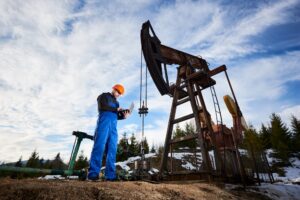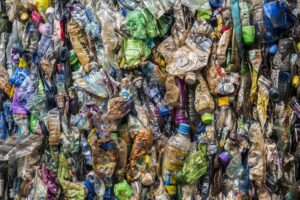Climate change is often framed as an unstoppable force—but the truth is, humans have the power to slow it down and reshape the future. While we can’t reverse all the damage that’s been done, we can prevent the worst impacts from unfolding. The key is urgent, collective action across all levels: individual, community, corporate, and governmental.
This article breaks down how human behavior contributes to climate change—and more importantly, what we can do about it. From clean energy to regenerative farming, from policy shifts to personal choices, prevention is possible. But it depends on whether we act now, or wait until it’s too late.
Understanding the Root Cause: Human Activity
At the core of climate change is the increased concentration of greenhouse gases in Earth’s atmosphere. The majority of this rise is driven by human activities such as:
- Burning fossil fuels for electricity, heat, and transportation
- Deforestation for agriculture and development
- Industrial processes like cement and steel production
- Land use changes and unsustainable agriculture
- Waste and overconsumption, especially in high-income nations
Carbon dioxide (CO₂), methane (CH₄), and nitrous oxide (N₂O) are the top contributors. These gases trap heat, disrupt weather systems, and push ecosystems to their limits.
The Good News: Climate Change Is a Human Problem with Human Solutions
Because humans caused it, we also have the power to curb it. Preventing climate change doesn’t mean stopping all emissions overnight—it means dramatically reducing greenhouse gas emissions while also increasing our planet’s ability to absorb carbon.
Here’s how.
1. Transition to Clean Energy
The biggest contributor to climate change is fossil fuel use. Phasing out coal, oil, and gas is essential.
What we can do:
- Invest in renewable energy: solar, wind, geothermal, tidal, and hydro
- Decarbonize electricity grids and move toward distributed energy systems
- Switch to electric vehicles, powered by clean energy
- Electrify homes with heat pumps and induction stoves
- Divest from fossil fuel companies and support clean energy policies
Governments, utilities, and individuals can all play a role in accelerating this shift.
2. Protect and Restore Nature
Nature is a powerful ally in climate prevention. Forests, wetlands, peatlands, grasslands, and oceans all absorb and store carbon.
Actions that help:
- Stop deforestation, especially in the Amazon, Congo Basin, and Southeast Asia
- Reforest degraded lands with native tree species
- Restore mangroves, seagrasses, and coral reefs to buffer coastal impacts
- Preserve biodiversity, which builds ecosystem resilience
- Support Indigenous land stewardship, which protects vast carbon sinks
Every acre of healthy land is a tool for carbon capture.
3. Shift to Climate-Smart Agriculture
Agriculture is both a contributor to and a victim of climate change. Reimagining how we grow food is critical.
Solutions include:
- Reduce methane emissions from livestock and rice paddies
- Use regenerative farming practices like cover cropping and no-till
- Limit synthetic fertilizer use and switch to compost and natural soil amendments
- Protect soil carbon by minimizing erosion and overgrazing
- Choose plant-rich diets that require fewer resources
Supporting local, sustainable farms also cuts emissions from transport and storage.
4. Rethink Transportation
Transportation is a major source of CO₂ emissions, especially in car-centric regions.
What individuals and cities can do:
- Walk, bike, or take public transit when possible
- Drive less, and switch to EVs or hybrids
- Fly less, especially for short distances
- Support rail, bus, and clean infrastructure investments
- Use carbon offset programs for unavoidable travel
Reducing demand for fossil-fueled transport can lower emissions significantly.
5. Make Buildings Efficient and All-Electric
Homes and buildings use energy for heating, cooling, lighting, and appliances. Most are inefficient and powered by fossil fuels.
Ways to improve:
- Retrofit existing buildings with insulation, better windows, and efficient HVAC
- Build with green materials and net-zero energy standards
- Switch from gas to electric appliances, like induction stoves and heat pumps
- Use smart thermostats and energy monitoring tools
- Install rooftop solar or participate in community solar programs
These changes reduce both carbon emissions and utility bills.
6. Cut Waste and Overconsumption
A large share of emissions comes from manufacturing, transporting, and disposing of goods—especially when waste is poorly managed.
Strategies to reduce impact:
- Buy less, buy better: durable, repairable, ethically made goods
- Reuse and repurpose before replacing
- Recycle properly, especially metals, glass, and electronics
- Compost food waste, which reduces methane from landfills
- Embrace a circular economy, where materials stay in use longer
Shifting away from a throwaway culture is one of the most impactful personal changes.
7. Use Your Voice and Your Vote
Individual actions are important—but systemic change is what scales. Governments, corporations, and institutions must act faster.
What helps drive change:
- Vote for leaders who prioritize climate policy
- Advocate for climate education in schools and communities
- Support climate justice, ensuring vulnerable populations are not left behind
- Push companies to reduce emissions and disclose climate risks
- Support legislation for renewable energy, carbon pricing, and conservation
When citizens speak out, decision-makers respond.
Frequently Asked Questions
Can individuals really make a difference?
Yes—but the greatest power comes when individuals organize, vote, and influence systems. Your personal choices matter more when they inspire others or push institutions to change.
Is it too late to prevent climate change?
It’s too late to prevent all climate change—but not too late to prevent the worst-case scenarios. The faster we cut emissions, the more livable the future becomes.
What’s the single most effective action I can take?
That depends on your lifestyle, location, and influence. For some, it’s switching to clean energy. For others, it might be changing your diet, or voting in a pivotal election.
How do I know which climate efforts are legit?
Look for transparent organizations, science-based targets, and measurable outcomes. Be wary of greenwashing—where companies claim eco-friendliness without real action.
Final Thoughts: The Power We Already Hold
Preventing climate change isn’t about saving the planet—it’s about saving ourselves, our communities, and the fragile systems that support life. Earth will survive. The question is: what kind of world will we live in?
The good news? We’re not powerless. Every solution we need already exists—from wind turbines to compost piles, from policy to protest. What’s missing is the speed, scale, and courage to act.
If we each do what we can, and push for more from those in power, we can rewrite the climate story—one decision, one voice, one ripple at a time.









Reader Interactions